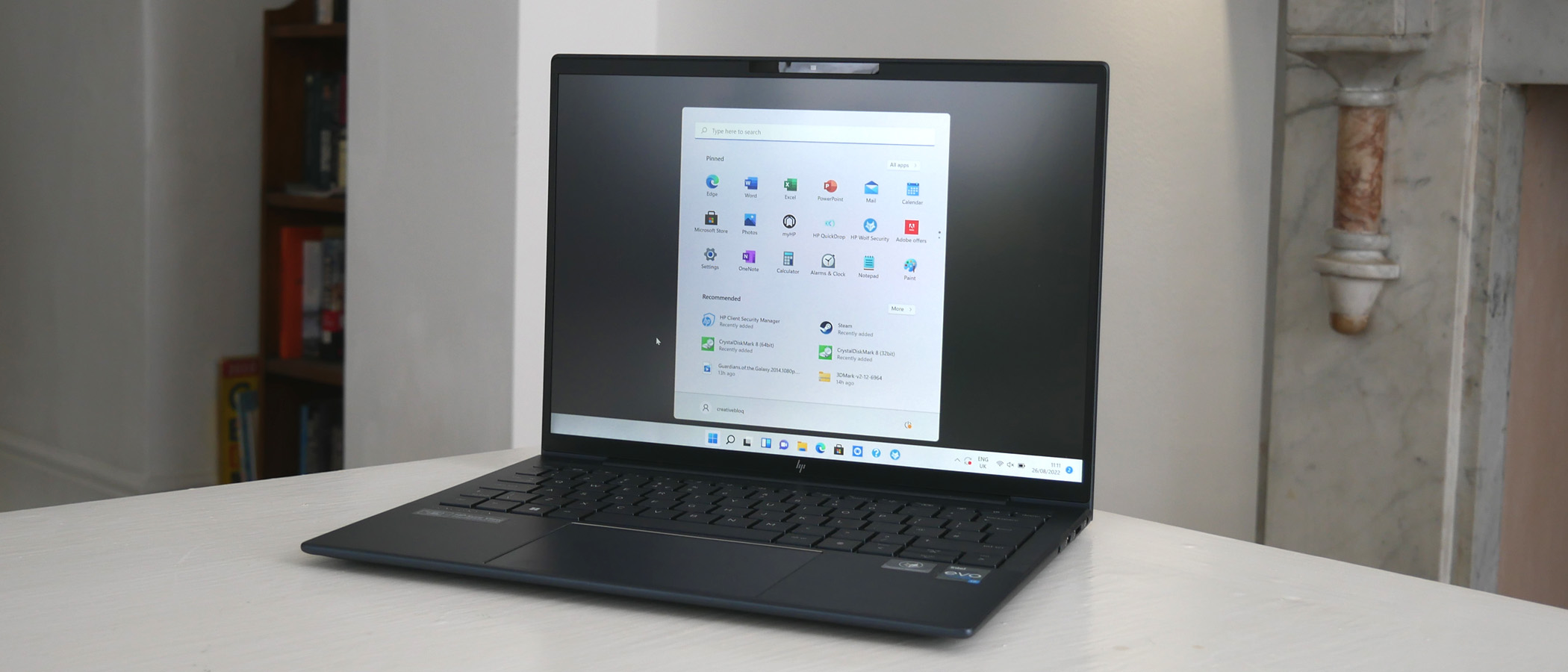Our Verdict
Updated for 2022, the HP Elite Dragonfly G3, drops the 2-in-1 functionality for a purer premium ultraportable approach. We like the taller 3:2 aspect screen in this compact 13.5-inch form factor. The combination of the slim chassis and great connectivity, including USB4, USB-A and full-sized HDMI is a plus, too. As is the excellent 14-hour battery life. But the 3:2 aspect screen suffers terrible viewing angles and the overall performance is patchy. Factor in a pretty painful price tag and it’s hard to make a rational case for this sleek and nicely built but ultimately slightly slapdash laptop.
For
- Very slim 16mm chassis
- Unusual 3:2 aspect form factor
- Excellent battery life and connectivity
Against
- Screen quality is poor
- Patchy performance
- Very expensive
Why you can trust Creative Bloq
It’s not often that a laptop from a big brand significantly misses its mark. But the HP Elite Dragonfly G3, updated for 2022, falls into that unfortunate category. It’s got a lot going for it, the new Dragonfly. It’s very nicely built, super-slim, and offers an intriguing 3:2 form factor as an alternative to the 16:9 widescreen masses.
It’s well specified, too, with a 12th Gen Intel CPU, a large battery for this device class, and much better connectivity than you might expect given the ultra-slim chassis. But it also suffers from some glaring issues. The most obvious is screen quality. We’ll come to the details, and for the record, it is possible to option an upgraded OLED panel to replace the LCD screen configured here. But as tested, the HP Elite Dragonfly G3’s screen simply isn’t good enough.
CPU: Intel Core i7-1255U (2 performance cores, 8 efficiency cores)
Graphics: Intel Iris Xe integrated
RAM: 16GB DDR5
Screen: 13.5-inch, 1,920 x 1,280, IPS
Storage: 512GB, PCIe Gen 3
Ports: 2x USB4 / Thunderbolt 40Gbps, USB-A 5Gbps, headphone, HDMI 2.0
Connectivity: Wi-Fi 6E AX211 (2x2), Bluetooth 5.2
Camera: 5MP webcam
Weight: 2.2 pounds / 0.99kg
Size: 11.7 x 8.67 x 0.64 in / 29.74 x 22.04 x 1.64 cm
Patchy performance is another problem. The core components are fine, but there’s something about HP’s configuration that results in sluggishness, which is a pity. Then there’s the pricing, which is not only pretty steep but also makes some of the competition, like the Dell XPS 13 Plus, look very cheap indeed.
It’s an interesting laptop, the HP Elite Dragonfly G3. As a superlight system for getting some serious content creation done on the move it has masses of potential. But as currently configured, it needs a little work.
HP Elite Dragonfly G3 review: features and design
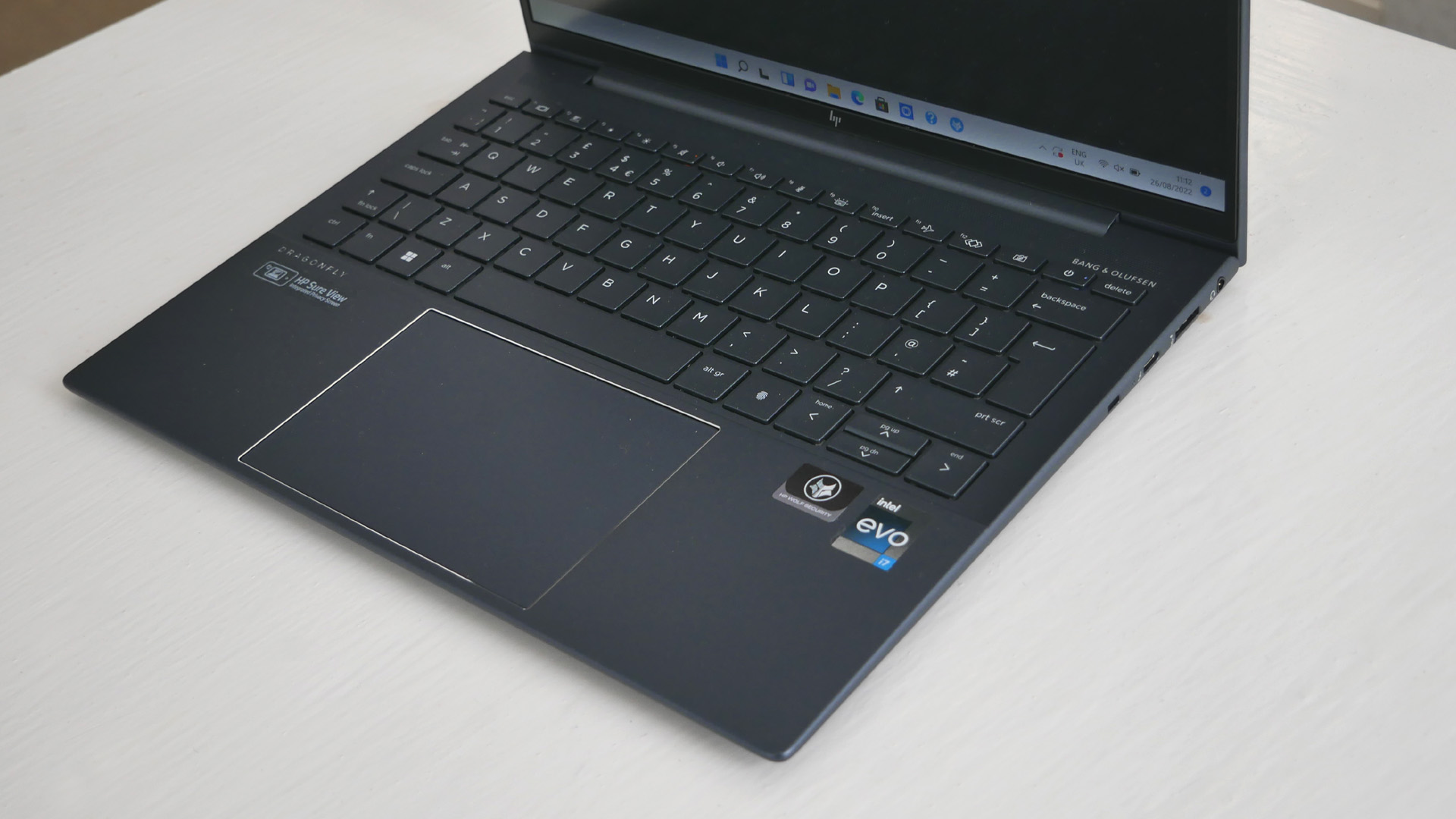
The HP Elite Dragonfly G3 is built around an intriguing 13.5-inch 3:2 aspect screen rather than the usual 16:9 widescreen panel found in most comparable portables. With smaller laptops like this, that little extra vertical space can come in handy. As configured here, the panel sports 1,920 by 1,280 pixels rather than 1,920 by 1,080. In some markets, a 3,000 by 2,000 OLED screen can be chosen optionally.
In terms of key components, the Intel Core i7-1255U CPU is a low-voltage member of Intel’s latest 12th Gen Alder Lake family. In this case, it runs two high-performance cores and eight efficiency cores. There are obviously much more powerful mobile CPUs available. But it’s a good fit for an ultralight laptop and, on paper, is well up to tasks like image and video editing on the move. Likewise, the 16GB of DDR5 memory and 512GB M.2 SSD are plenty solid enough for getting proper work done, rather than just browsing the web or watching content.
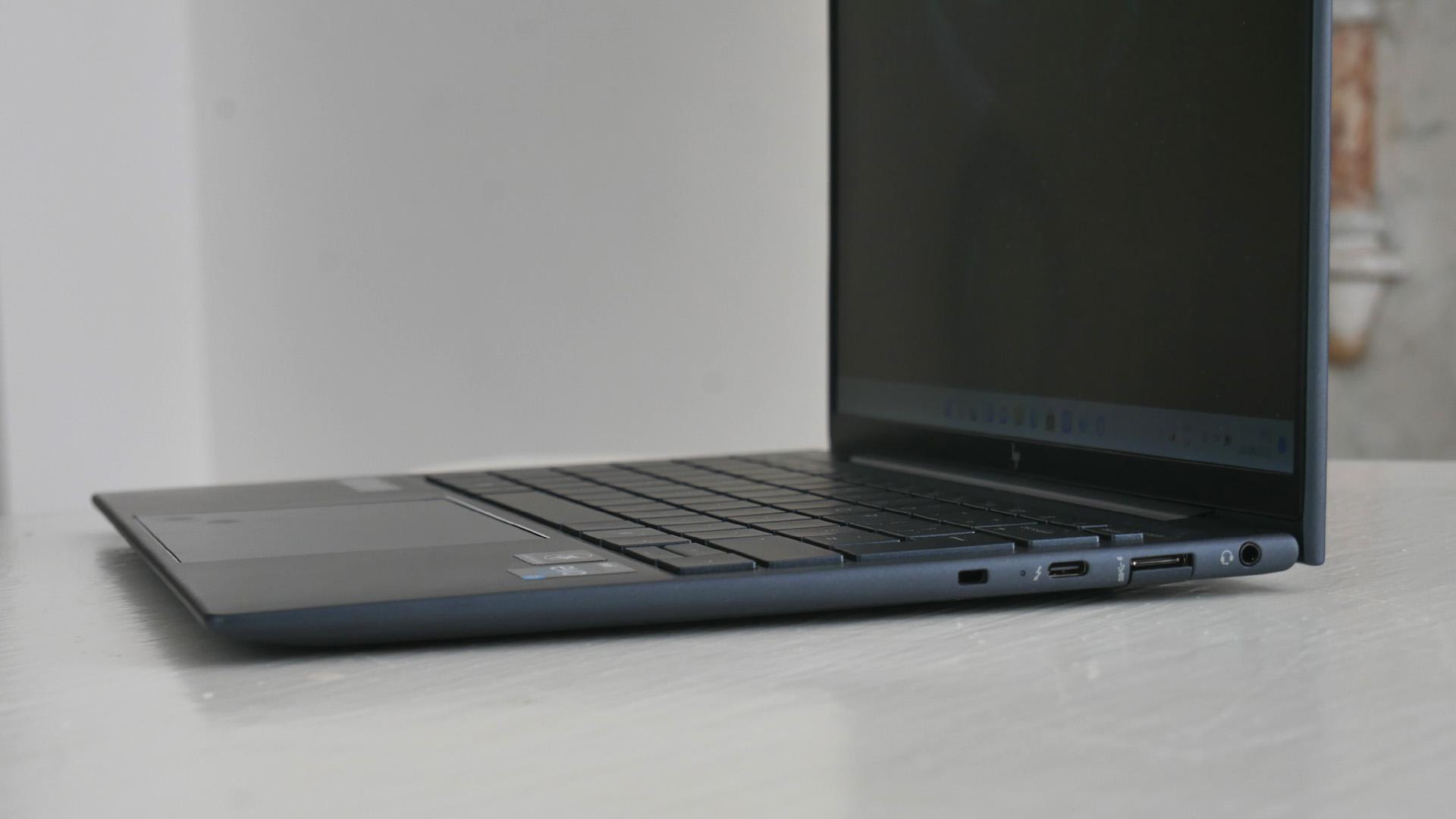
Still, those items are pretty much what you’d expect on a premium ultraportable. What does come as a pleasant surprise is this laptop’s connectivity. For starters, there’s a USB-C port with full Thunderbolt 4 / USB4 support on both sides of the chassis for high-speed peripherals. The really clever bit, however, is the hinged full-sized USB-A socket, which is a lovely trick on such a slim chassis. Similarly, the full-size HDMI port on the other side is nice and only adds to the Dragonfly’s credentials as a machine that can get stuff done despite its diminutive proportions.
Speaking of which, this laptop is just 16mm thick and weighs just under a kilo. It’s extremely portable. Footprint-wise, it’s pretty compact, with very slim bezels on the sides of the display, albeit with slightly bigger chin and forehead bezels. Still, at least that forehead allows space for a decent 5MP webcam. The HP Elite Dragonfly G3 is also nicely built from aluminium and magnesium. It’s a quality feeling bit of kit.
HP Elite Dragonfly G3 review: price
Pricing is arguably where the problems begin for the HP Elite Dragonfly G3. At $2,112 or roughly £2,000 as configured in the UK, this is a painfully pricey premium ultraportable. There are cheaper configurations available, but even the base model is nearly $2,000 / £2,000. That doesn‘t make for a great comparison with, say, the delightful Dell XPS 13 Plus, which kicks off at just $1,299 or £1,170.
HP Elite Dragonfly G3 review: performance
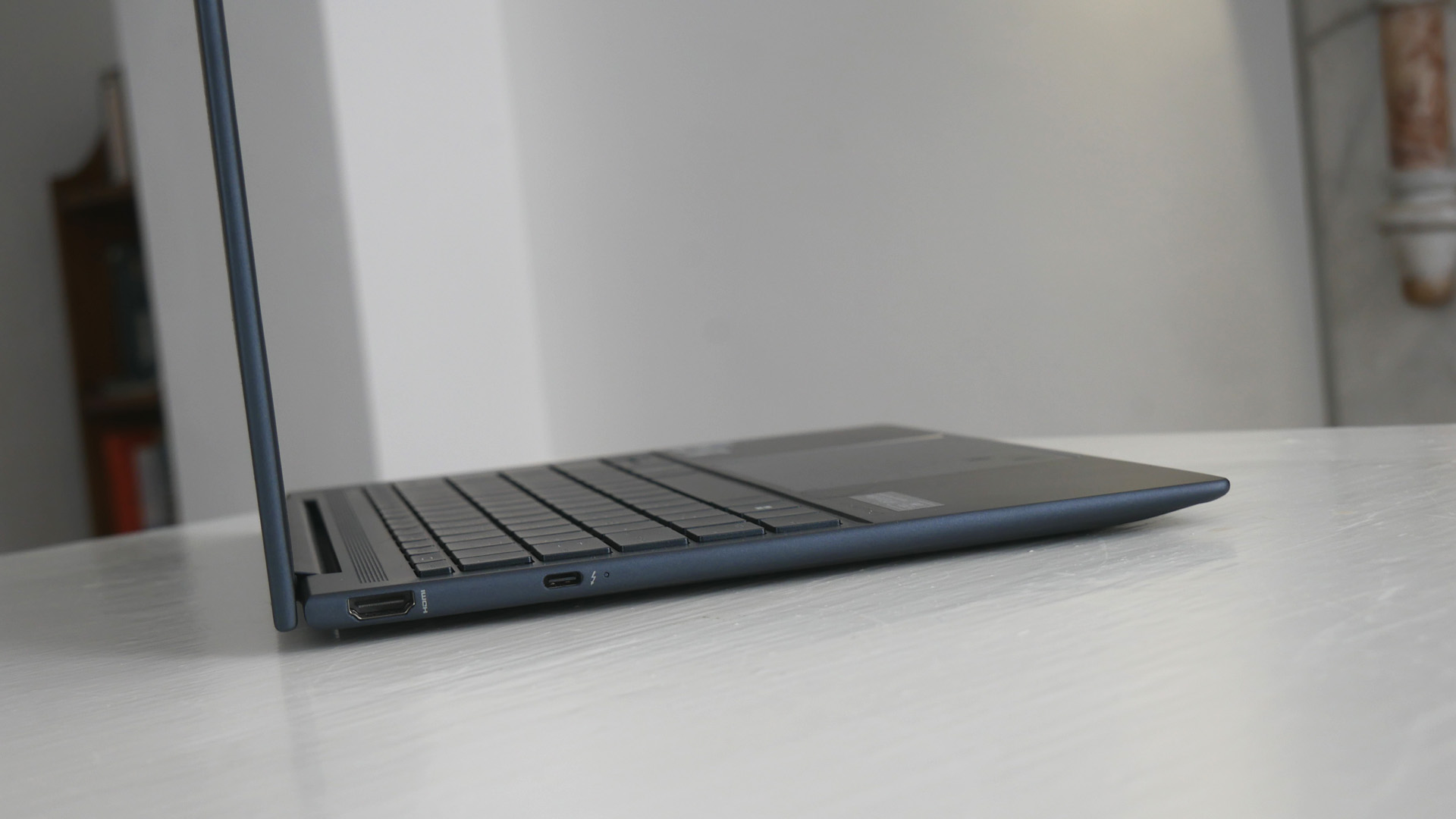
Cinebench R23: 10,986pts
3DMark Firestrike: 11,430pts
PCMark 10: 6,310pts
Metro Exodus 1080p Ultra: 37fps
Total War: Three Kingdoms 1080p Ultra: 38fps
Crystal Disk read: 3,550MB/s
Crystal Disk write: 3,224MB/s
Crystal Disk 4K read: 73MB/s
Crystal Disk 4K write: 172MB/s
4K x265 encode: 6.9fps
Battery life (1080p video playback): 11h 47m
If you go by the raw benchmark numbers, the HP Elite Dragonfly G3 does decently enough. The CPU handles rendering tasks like Cinebench just fine. Likewise, it’ll encode 4K video as a tolerable lick, especially given this is an ultraportable laptop. But in broader, more subjective terms, there are problems.
Installing software can take an age. So, does loading up data-intensive apps. This isn’t a gaming system, so we’re not terribly worried about actual gaming performance. But it’s indicative of the issues the Dragonfly has that it takes so long to load up a game level, you begin wondering if it’s time to make a cup of tea.
Generally, anything that involves shunting a lot of data around can be a problem. Precisely what causes this isn’t clear. The M.2 SSD is only a PCIe Gen 3 drive rather than Gen 4, which is a pity. And not a terribly fast one at that. But it can still punt data around at well over 1GB/s at worst. So, it can’t fully be to blame. Nor can the 16GB or DDR2 memory, which is surely adequate in this class of laptop.
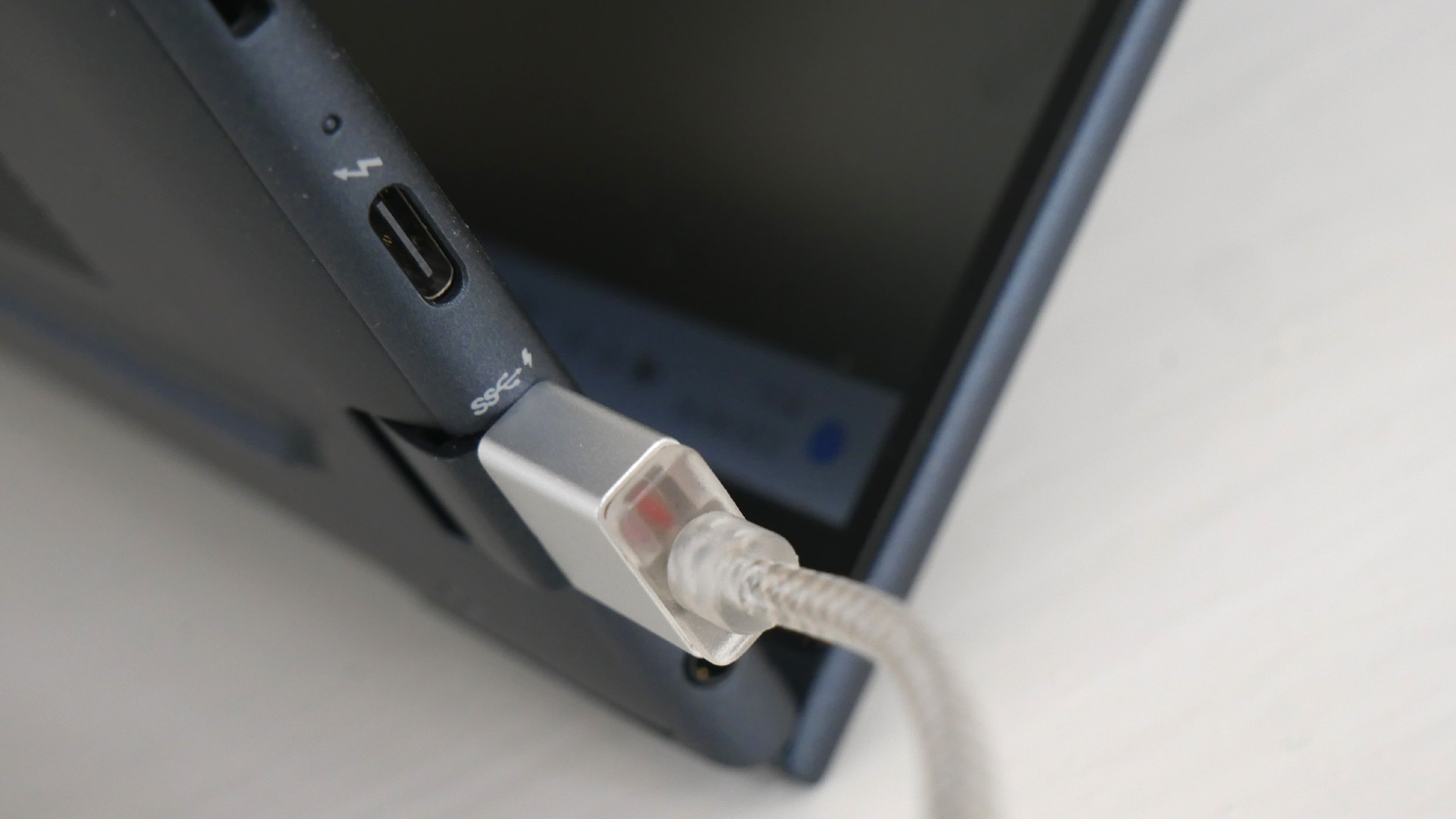
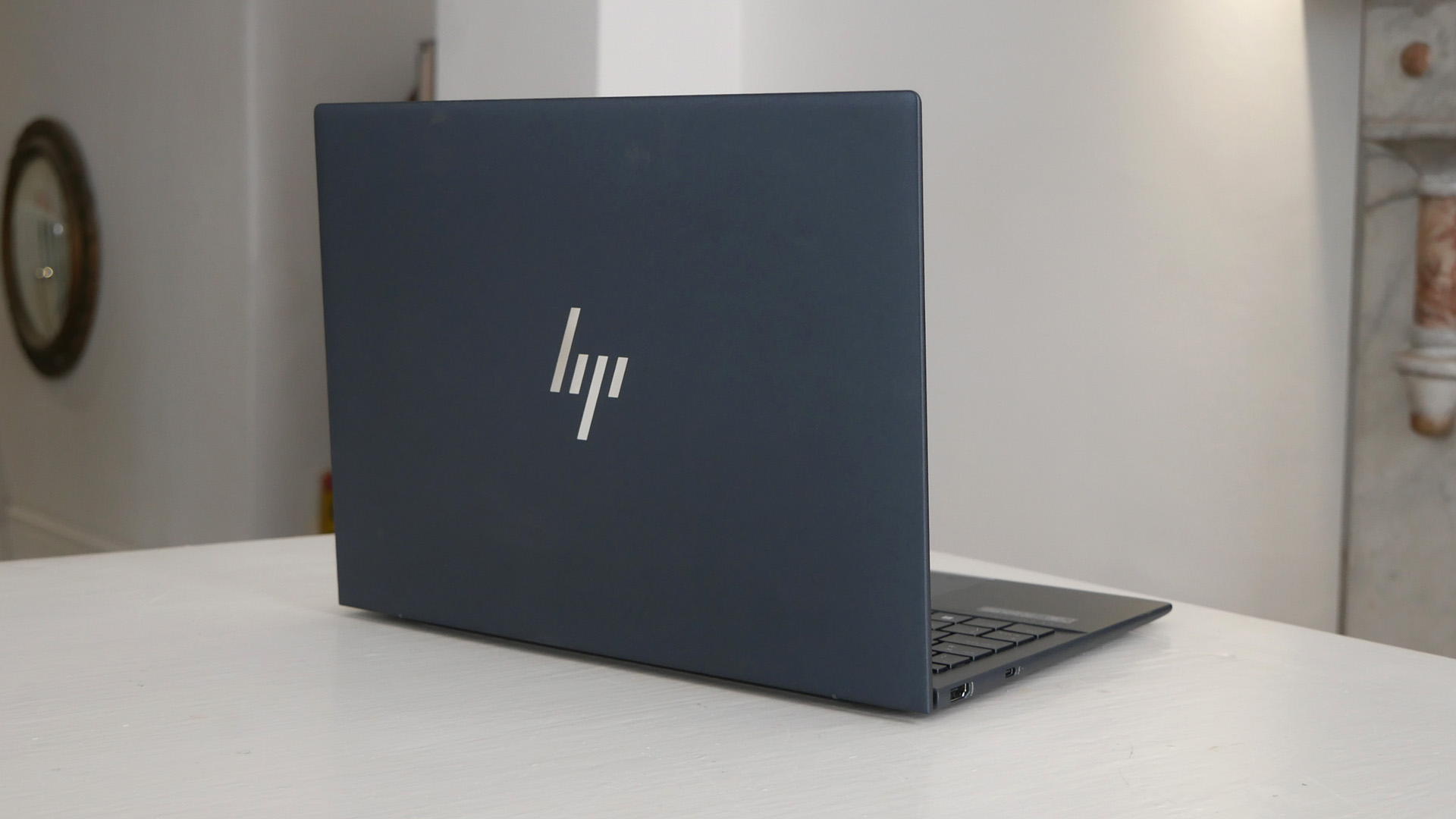
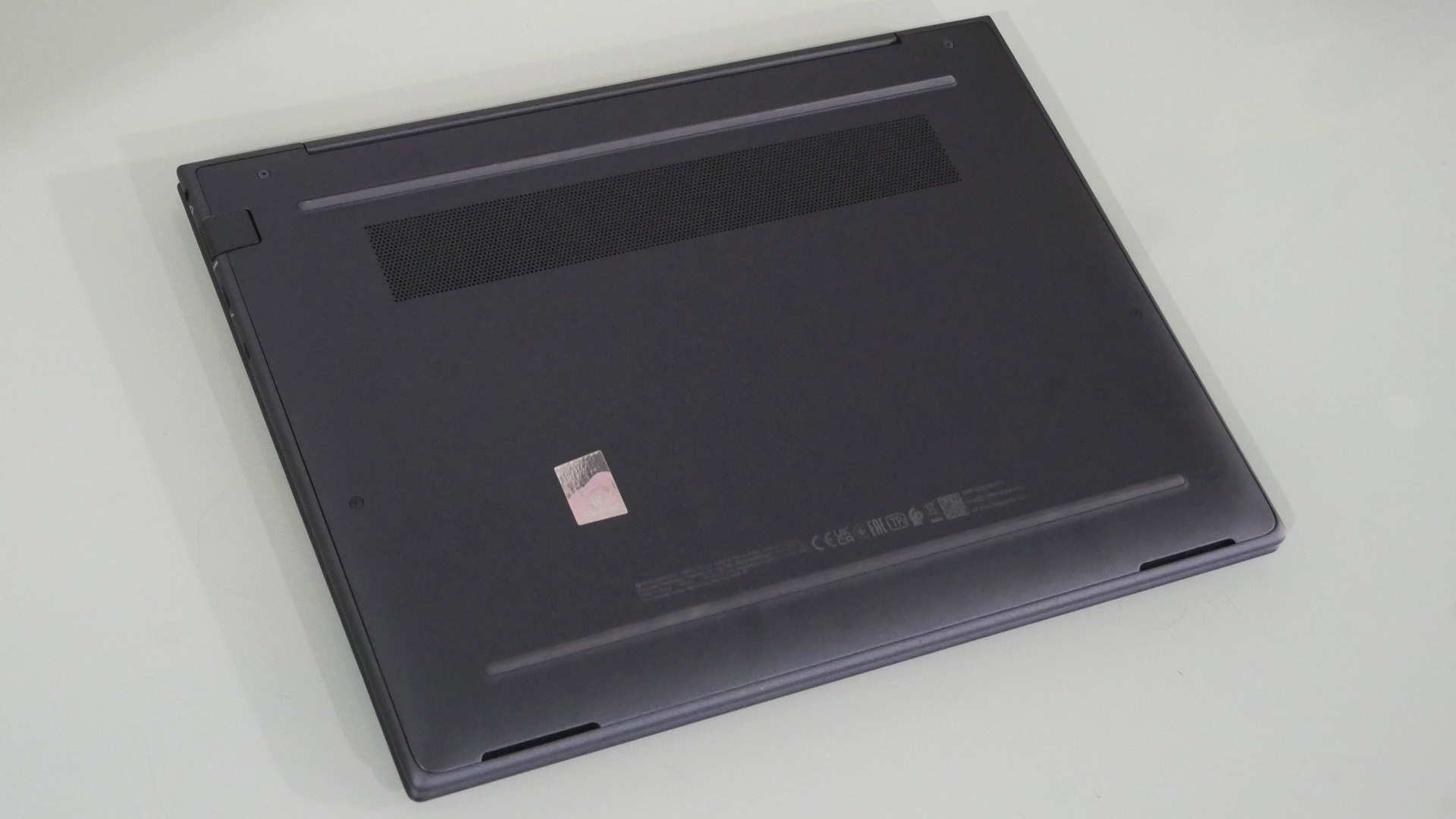
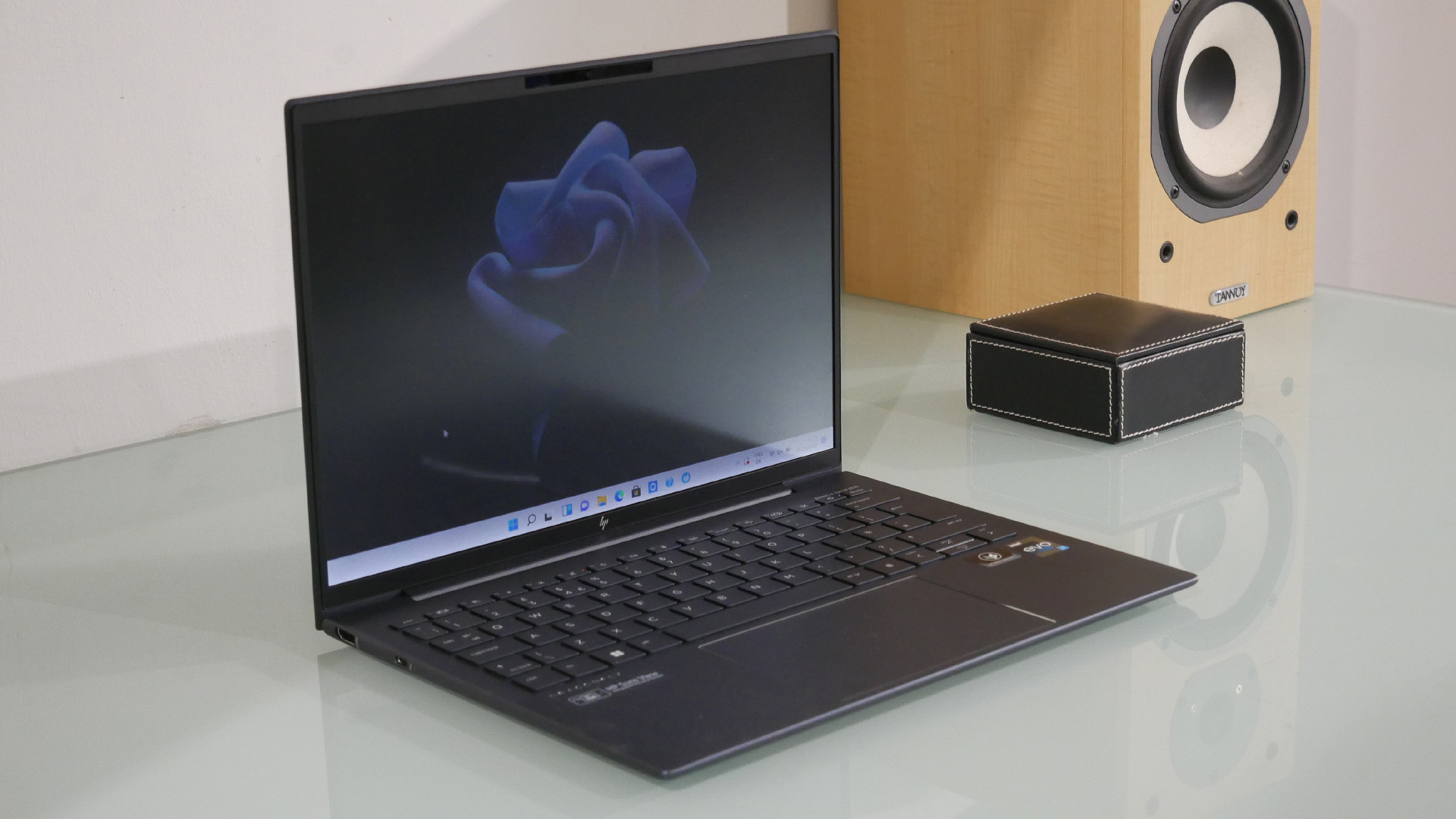
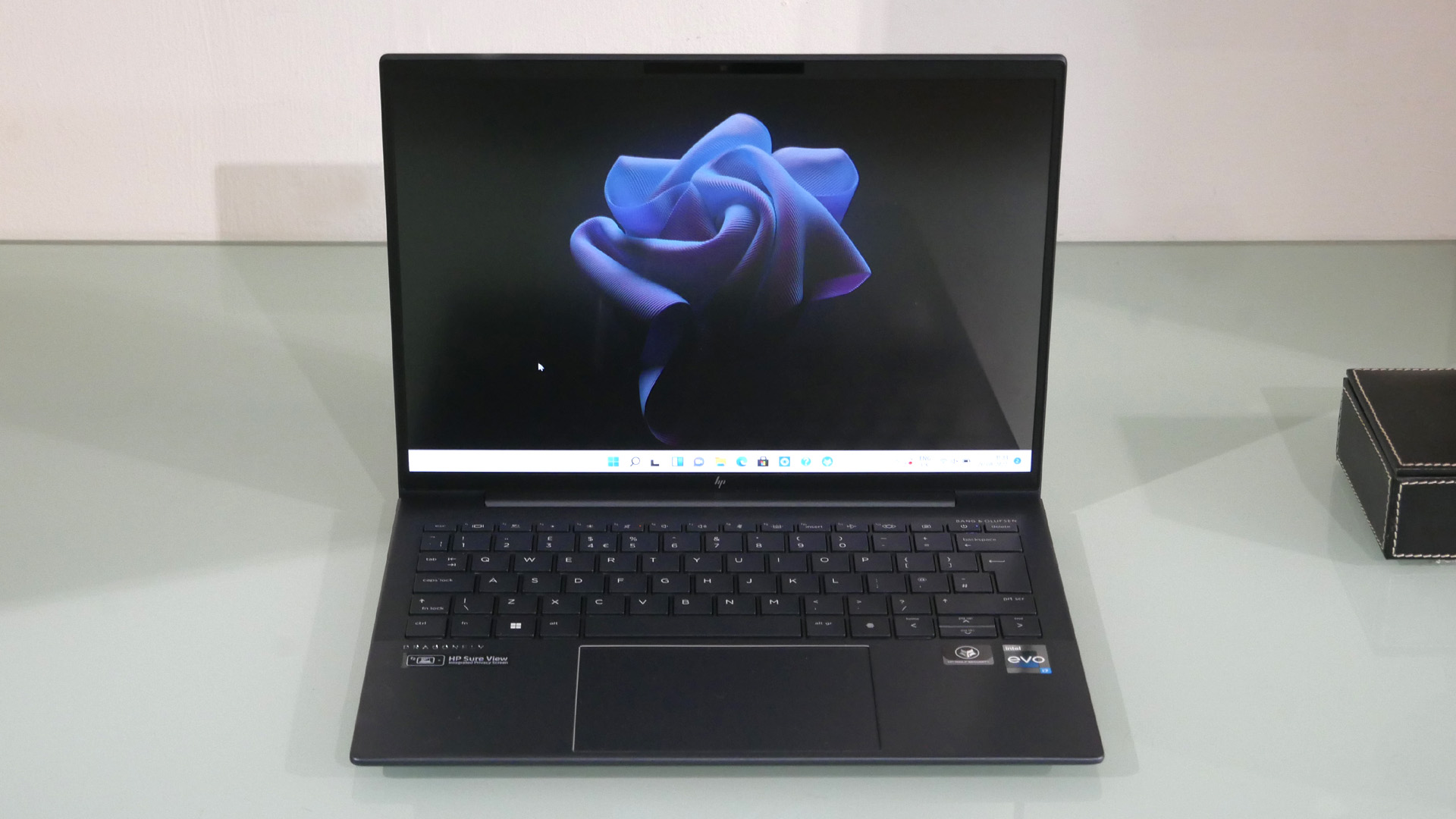
Anyway, that intermittently sluggish performance isn’t the only issue. The 13.5-inch screen’s viewing angles are awful, simply not good enough on a mainstream laptop, let alone one this expensive. The OLED upgrade option no doubt solves the problem. But none of the screens available in this laptop should be as bad as this.
There’s much better news when it comes to battery life, with the HP Elite Dragonfly G3 clocking in over 14 hours for 1080p video playback with the screen at half brightness. This is certainly a laptop that can deliver true all-day operation away from the mains.
Should you buy the HP Elite Dragonfly G3 (2022)?
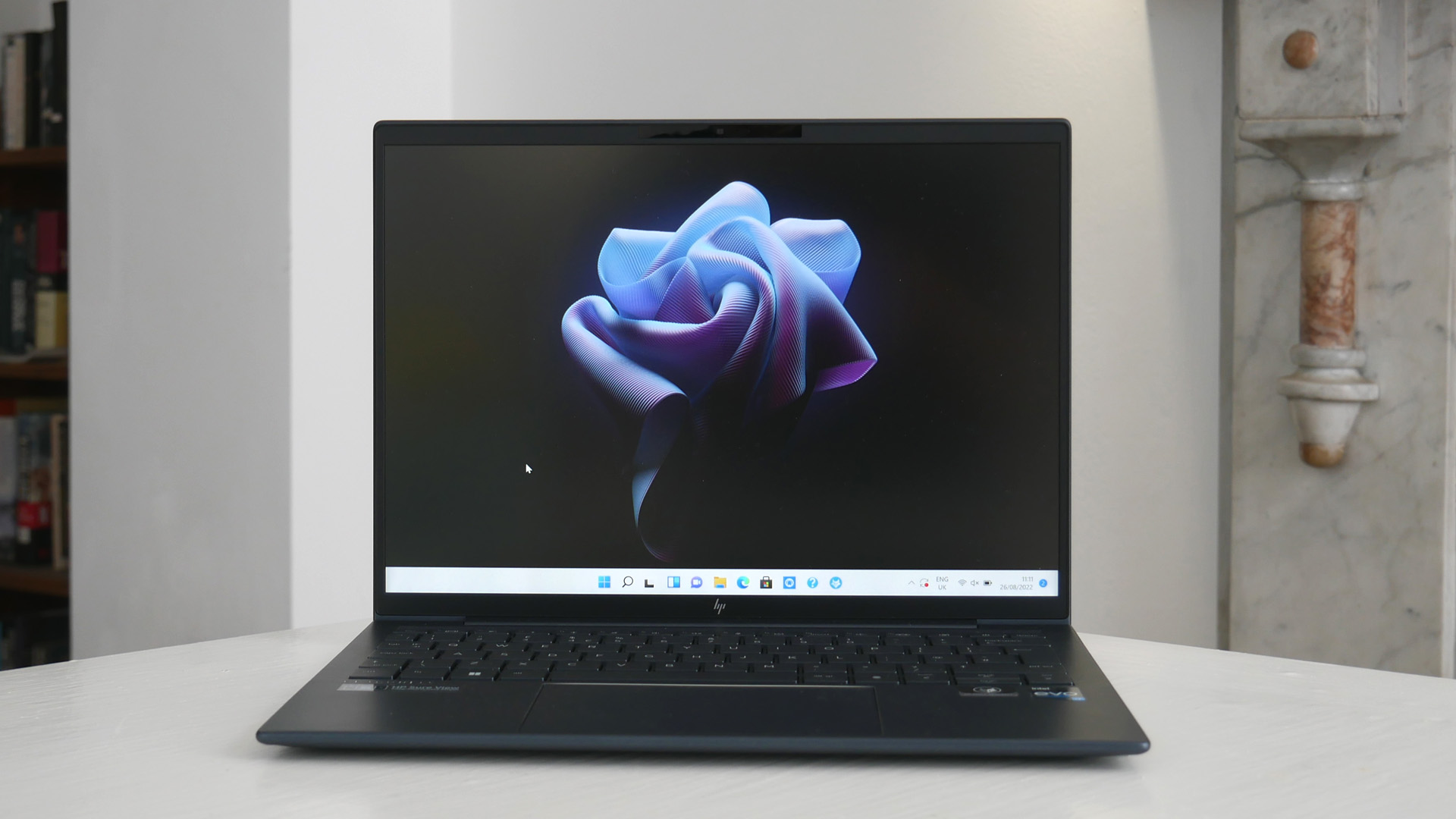
In many ways, the HP Elite Dragonfly G3 is a very appealing prospect for getting content creation work done on the move. It’s super portable and really nicely built, yet offers excellent connectivity for fast peripherals like external storage and hooking up to external displays. We really like the taller 3:2 screen aspect in a compact drive like this, too.
The remarkable battery life is a major plus point, too. Unless you are going really full on with jobs like video encodes, you can go all day with this thing away from the mains, no problem.
But the combination of patchy performance, sub-par screen quality, and a very high price makes it tough to recommend the HP Elite Dragonfly G3. That’s especially true when there are corkers like the Dell XPS 13 and 13 Plus available for less cash.
Read more:

Thank you for reading 5 articles this month* Join now for unlimited access
Enjoy your first month for just £1 / $1 / €1
*Read 5 free articles per month without a subscription

Join now for unlimited access
Try first month for just £1 / $1 / €1
out of 10
Updated for 2022, the HP Elite Dragonfly G3, drops the 2-in-1 functionality for a purer premium ultraportable approach. We like the taller 3:2 aspect screen in this compact 13.5-inch form factor. The combination of the slim chassis and great connectivity, including USB4, USB-A and full-sized HDMI is a plus, too. As is the excellent 14-hour battery life. But the 3:2 aspect screen suffers terrible viewing angles and the overall performance is patchy. Factor in a pretty painful price tag and it’s hard to make a rational case for this sleek and nicely built but ultimately slightly slapdash laptop.

Jeremy has been writing about technology since the 90nm Netburst era (Google it!) and enjoys nothing more than a serious dissertation on the finer points of input lag and overshoot followed by a forensic examination of advanced lithography. Or maybe he just loves machines that go 'ping!'. He has written for a variety of publications, including TechRadar, The Independent, Digital Camera World, T3, PC Gamer, GamesRadar+.
